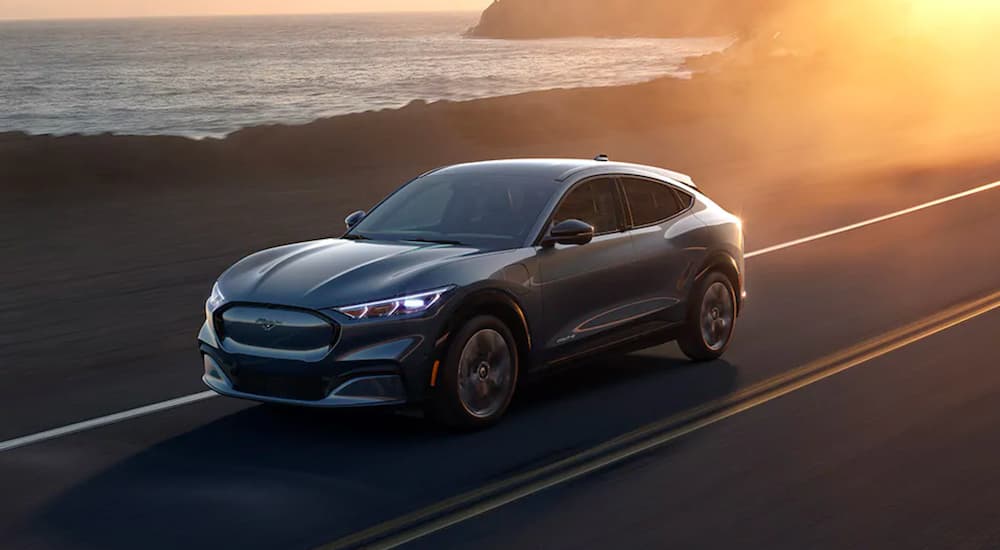Automotive technology is constantly changing, constantly growing, and developing in new and exciting ways designed to make life easier and make driving more enjoyable. One of the major focuses for new technology in recent years (though honestly, it’s always been important) is the engines in vehicles and how power is generated. If you’re considering a Ford as your next vehicle and are beginning to wonder, “Is there a Ford dealer near me?” you’ll find all sorts of options: from standard gas-powered Internal Combustion Engines (ICE) to hybrids, plug-in hybrids, and even Battery Electric Vehicles (BEVs) that don’t use any gasoline at all. In the midst of all of this, you might also see the words “Flex Fuel.”
That will likely have you wondering: what is Flex Fuel, should you really care, and should you have a flex fuel vehicle? Those are all good questions, along with considerations about the pros and cons of flex fuel and vehicles that can utilize it, which is why I’m here to help provide some answers. Some of this will be quite clear and straightforward, while other things will be a bit more problematic. So let’s dig in…
Flex Fuel and Flex Fuel Vehicles
Let’s start with the basics, “Flex Fuel” is shorthand for “Flexible Fuel Vehicles” (FFV), which are cars, trucks, SUVs, vans, and any other type of vehicle with an ICE that’s been designed to run on a range of gasoline and ethanol blends for fuel. Still with me? Okay, good. Ethanol is simply a type of alcohol—high school chemistry taught us that chemicals ending in “ol” are usually alcohol—that can be used as fuel in an engine. One of the keywords to remember here is “blend;” these aren’t vehicles running on pure ethanol but rather a gas/ethanol blend.

In fact, you’re probably using a gas/ethanol blend whether you have a flex fuel vehicle or not because the vast majority of gas you’ll get from a station is E10, which means it’s 10% ethanol and 90% gasoline. FFVs simply have the ability to run on higher amounts of ethanol in the gas, from as low as the E10 stuff that most people use up to E85, which means it’s 85% ethanol and just 15% gasoline.
If you suddenly recognized E85, then you’ve already run into flex fuel out in the wild at a gas station because that’s a common name for it. It’s worth pointing out, just to really be confusing, that E85 doesn’t always have 85% ethanol; ethanol can make vehicles hard to start in very cold weather, so in the winter, E85 gas might only be about 50% ethanol to keep Flex Fuel vehicles running smoothly. Other than a few changes to a vehicle’s engine, there isn’t much required for a car to be an FFV, and you can’t necessarily tell one from any other vehicle at a simple glance—though many have some kind of brand badging to let you know. Ford models typically have a “Flex Fuel” badge on them, for example.
Is Flex Fuel New?
Not at all; though the term “flex fuel” is fairly modern, the idea of running a vehicle on alcohol has been around for well over a century. As far back as the 1880s, Henry Ford developed a vehicle with an engine that could run on ethanol, and he released a Model T in 1908 that could use gasoline or ethanol, making it essentially an FFV. Gas prices at the time were low, and no one was worried about things like climate change, carbon footprints, or vehicle emissions, so the idea of using ethanol for fuel never really went anywhere back then.
About 30 years ago, in the mid-1990s, Ford gave it another go and released flex fuel models using E85 gas to see if there was greater interest. It caught on, and soon other brands were developing models that could utilize E85 gas, including General Motors, Toyota, Nissan, and even luxury companies like Mercedes-Benz. The public interest in E85 and FFVs has slowed a bit, particularly with the modern shift to BEVs, so you won’t find many of them as new models these days. There are still millions of FFVs available, but they remain pretty common among commercial vehicles since they can be useful for business fleets.
What Are the Advantages of Flex Fuel?
There are some clear advantages (and drawbacks) for the use of flex fuel and things like E85 gas, which include:
- Often Cheaper – Generally, ethanol is cheaper than gasoline, so E85 gas is typically priced lower than others, including E10. Ethanol prices can fluctuate like anything else, so that the savings can change, but it’s generally cheaper.
- Domestic Production – The ethanol used for E85 gas here in the US typically comes from corn, which is grown and produced here in the US. One of the big arguments for E85 is that it helps lower our reliance on oil from other countries.
- Fewer Emissions – In a vehicle’s engine, ethanol produces fewer greenhouse gases when burnt for fuel. It burns cleaner and greatly reduces CO and CO2 emissions compared to gasoline, which makes it (sort of) better for the environment (see below).
Those are the major benefits these days. There used to be more, like tax incentives for FFVs, but those have mostly moved to electric and plug-in hybrid models, so you’re better off with one of those if you’re trying to reduce your tax liability.
What Are the Disadvantages of Flex Fuel?
Like anything else in this world, the use of flex fuel is not without its drawbacks, some of which are pretty serious. These include:
- Lower Gas Mileage – Although E85 has a higher octane rating, meaning it can deliver great performance, it isn’t as efficient as gasoline. FFVs have lower fuel efficiency, so you’ll stop for gas more often. This can be offset by the lower price of E85 gas, but that depends entirely on how much it costs at the moment.
- Potentially Damaging – Ethanol is harsh and can damage fuel lines and other parts, particularly plastic parts, in a vehicle. This is why it’s important that E85 gas is only used in FFVs that are designed to handle it.
- Sole Crop Use – Since ethanol comes from corn, the focus on it over the last couple of decades has been a big part of corn production being subsidized and incentivized for farmers. This means you end up with farmland used to grow corn for ethanol rather than used for crops for human consumption or used for conservation.
- Possibly Worse for the Environment – A recent study found that ethanol could be much worse for the environment than gasoline. Specifically, producing ethanol by changing land to grow corn, plus processing that corn into ethanol, may create more emissions and greenhouse gases than simply using gasoline in cars.
Research is still being done on the overall impact of using E85 en masse when it comes to the environment, and this is one of those things that might not be fully understood for some time. Hopefully, in the end, any damage done is minimal and reversible given enough time and with ongoing efforts to reduce emissions throughout the industry.
Should You Really Care?
At this point, flex fuel and FFVs are a bit of old news; they’re still out there, but they’re definitely getting elbowed aside by the widespread focus on BEVs. You won’t find a lot of new FFVs on the market, though, as I said, many of them are still being sold as used. Since E85 can be a bit difficult to find at gas stations, you have even less reason to care; having a flex fuel vehicle gives you more freedom when filling the tank, but it probably won’t revolutionize how you drive. The biggest focus for flex fuel these days is fleet vehicles, but the rest of us can go about our day and wonder if we’ll ever get a Mr. Fusion to power our cars.





